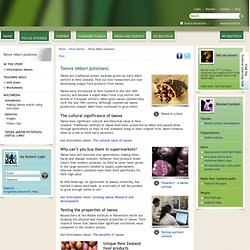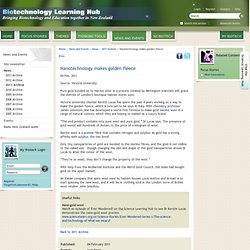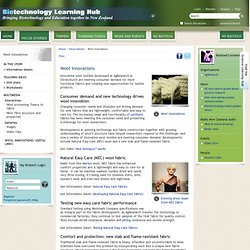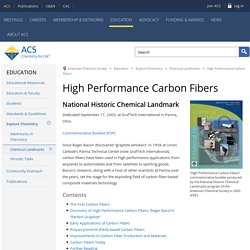

Revolution Fibres. The Zealong Tea story. Voiceover: Drinking tea is a Chinese tradition that’s over 5000 years old.

Most of the world’s tea is produced in Asia where growing conditions are ideal, but now a Taiwanese immigrant to New Zealand, Vincent Chen, is challenging this tradition. This is the story of Zealong – New Zealand’s first and only tea producer. Discovering that camellia, a relative of the tea plant, thrived in New Zealand’s Waikato region started Vincent on the road to discovering how he could grow tea in New Zealand. Vincent Chen: To grow tea in New Zealand, no one’s think about it before.
One day, my parents with me and we are drinking the oolong tea, which we bring from Taiwan. Oolong tea is different from the more familiar green and black teas. Taewa (Māori potatoes) Taewa were introduced to New Zealand in the late 18th century and became a staple Māori food crop before the arrival of European settlers.

Māori grew taewa commercially until the late 19th century. Although commercial taewa production ceased, Māori have continued to grow them. The cultural significance of taewa Taewa have significant cultural and historical value in New Zealand. Traditional varieties of taewa have been preserved by Māori and passed down through generations so they’re still available today in their original form. Get information sheet: The cultural value of taewa. Nanotechnology makes golden fleece. Victoria University chemist Kerstin Lucas has spent the past 4 years working on a way to make the golden fleece, which is now set to be spun in Italy.

With chemistry professor James Johnston, she has developed a world-first formula to make gold merino wool in a range of natural colours, which they are hoping to market as a luxury brand. “The end product contains only pure wool and pure gold,” Dr Lucas says. The presence of gold would add hundreds of dollars to the price of a kilogram of wool. Merino wool is a protein fibre that contains nitrogen and sulphur. As gold has a strong affinity with sulphur, the two bond. Only tiny nanoparticles of gold are bonded to the merino fibres, and the gold is not visible to the naked eye – though changing the size and shape of the gold nanoparticles allows Dr Lucas to alter the colour of the wool.
Wool innovations. Consumer demand and new technology drives wool innovation Changing consumer needs and lifestyles are driving demand for new fabrics that are lightweight, comfortable and easy to care for.

The increasing range and functionality of synthetic fabrics has been meeting this consumer need and presenting a challenge for wool researchers. Developments in spinning technology and fabric construction together with growing understanding of wool’s structure have helped researchers respond to the challenge, and now a variety of innovative wool textiles are meeting consumer demand. Developments include Natural Easy Care (NEC) wool and a new stab and flame-resistant fabric. Get video: How Solospun™ works Natural Easy Care (NEC) wool fabric Made from fine Merino wool, NEC fabric has enhanced comfort properties and is lightweight and easy to care for at home – it can be machine washed, tumble dried and needs very little ironing.
Get information sheet: Natural Easy Care fabrics. The biospife story. Voiceover Every year, millions of kiwifruit are eaten with a neat little plastic tool, the ZESPRI spife, which is then thrown away.

Aware that consumers are demanding more sustainable practices, ZESPRI partnered with Scion to find a solution. This is the story of the biospife, the world’s first compostable spife. Understanding Food Additives. 3.8 Institute. The Biomimicry 3.8 Institute is a not-for-profit organization that promotes the study and imitation of nature’s remarkably efficient designs, bringing together scientists, engineers, architects and innovators of all ages who can use those models to create sustainable technologies.
The Institute was founded in 2006 by science writer and consultant Janine Benyus in response to overwhelming interest in the subject following the publication of her book, Biomimicry: Innovation Inspired by Nature. See Janine’s TED Talk video for her groundbreaking introduction to biomimicry. Today, the Biomimicry 3.8 Institute focuses on three areas: Developing our online database of nature’s solutions, AskNature.org.Hosting our annual, international Biomimicry Student Design Challenge.Growing our Global Network of regional biomimicry practitioners. See examples of biomimicry in action! Meet executive director Beth Rattner, our staff, and the Institute board. Video: Inside Look at How Scott Bicycle’s Carbon Fiber Frames are Made. High Performance Carbon Fibers - National Historic Chemical Landmark. Improvements in Carbon Fiber Production and Materials Any material containing carbon can be “carbonized” by heating it to around 1,000° C, producing a substance that is roughly 99 percent carbon.

Upon further heating, typically to about 2,500 °C, such a material can be converted to 100 percent carbon, while transforming the internal structure from a poorly ordered to a more ordered form. But not all carbon materials heat-treated to these high temperatures are truly graphitic. Only certain carbons start with an adequately ordered structure to form nearly perfect graphite crystals, and only these graphitic substances can approach the excellent properties of pure graphite—high thermal and electric conductivities combined with high stiffness (Young’s modulus). PAN and rayon are both non-graphitizing materials, so carbon fibers from these precursors will never be truly graphitic, even after heat treatment to high temperatures. Pitch is a fairly inexpensive raw material.
Biomimicry.